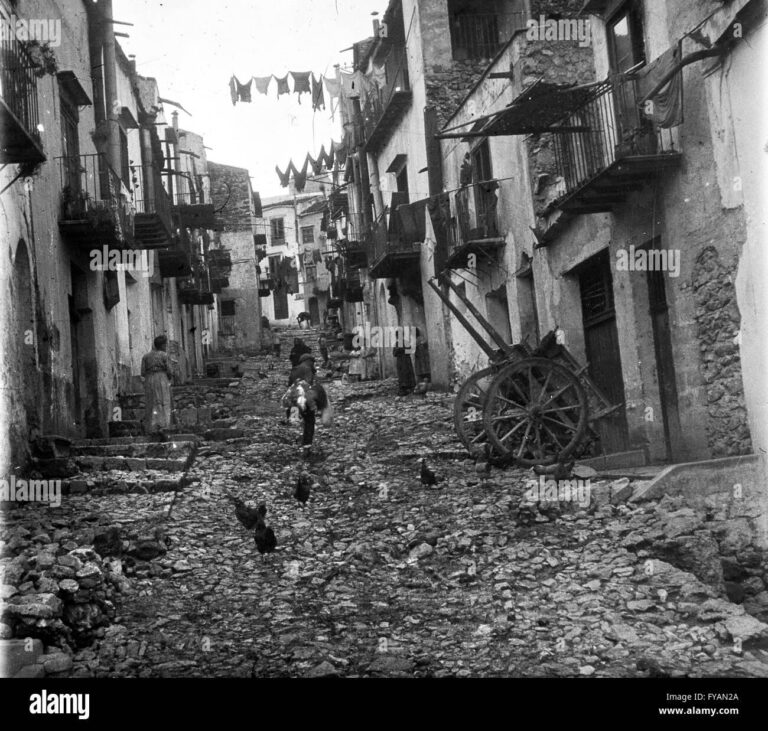From the political turmoil of 1920s Italy to the complex realities of 1930s Palestine, and onward to the vibrant subcultures of 1980s ska scenes, Antifa movements have taken on diverse forms and meanings across different eras and regions. This article traces the multifaceted history of anti-fascist activism, revealing how its evolution mirrors changing social and political landscapes. By exploring these varied incarnations, we uncover a broader understanding of Antifa’s enduring presence and its shifting expressions around the world.
Antifa’s Historical Roots in 1920s Italy and the Fight Against Fascism
Antifa’s genesis can be traced back to the turbulent political landscape of 1920s Italy, where radical groups organized in fierce opposition to Benito Mussolini’s rising fascist regime. Originating from sidewalk clashes in major cities such as Milan and Turin, early antifascist activists employed direct action tactics, including protests, sabotage, and armed resistance, to disrupt the fascist consolidation of power. These movements were often composed of workers, socialists, anarchists, and communists united not only by ideology but also by a commitment to preserve democratic freedoms under siege.
The legacy of these early antifascists is underscored by their relentless fight against authoritarianism in a country spiraling into dictatorship. Their efforts laid foundational strategies and symbols used by subsequent antifa movements worldwide. Below is a brief outline illustrating key elements from 1920s Italy that shaped future antifascist activism:
- Street Militancy: Direct confrontation with fascist squads known as the Blackshirts.
- Network Organization: Formation of underground cells to evade state surveillance.
- Coalition Building: Cross-ideological alliances among leftist factions.
- Symbolic Imagery: Use of antifascist emblems like the “Three Arrows” to signify resistance.
| Year | Event | Impact |
|---|---|---|
| 1921 | March on Rome | Mussolini rises to power; antifascist groups mobilize response |
| 1924 | Assassination of Giacomo Matteotti | Galvanizes antifascist resistance, sparks international condemnation |
| 1926 | Fascist laws enacted | Forces antifascists underground; intensifies clandestine operations |
The Evolution of Antifa Ideology Within 1930s Palestine’s Anti-Colonial Struggles
The trajectory of Antifa’s ideological underpinnings in 1930s Palestine reveals a multifaceted resistance matrix deeply intertwined with the broader anti-colonial sentiment brewing under British mandate rule. While Antifa is often contextualized within European fascist opposition, its principles of grassroots mobilization, direct action, and anti-authoritarianism found resonance among Palestinian groups confronting both colonial oppression and rising fascist sympathies within the region. These early expressions were less formally structured but shared a commitment to disrupting imperial power structures and fostering solidarity across ethnic and religious lines, laying foundational tactics that would echo in later global anti-fascist movements.
Key features of this emergent strain of anti-fascism in Palestine included:
- Community-based self-defense networks designed to protect neighborhoods from colonial raids and fascist violence
- Communication cells utilizing underground presses and oral storytelling to counter propaganda
- Cross-movement collaborations linking anti-Zionist, Arab nationalist, and socialist factions under an anti-colonial umbrella
| Aspect | Manifestation in 1930s Palestine |
|---|---|
| Organizational Structure | Loose, cell-based groups |
| Primary Opponents | British colonial forces & fascist sympathizers |
| Methods | Direct action, propaganda dissemination |
| Coalitions | Arab nationalist and socialist factions |
How the 1980s Ska Scene Shaped Modern Antifa Culture and Activism Strategies
The 1980s ska scene, originating primarily in the UK and later spreading globally, served as an unlikely yet potent incubator for what would evolve into key facets of modern antifa culture and activism. This subculture’s blend of music, fashion, and political consciousness forged a unique space where anti-fascist sentiment was not only expressed but also strategically organized. The sharp, energetic rhythms of ska became the soundtrack to resistance, while the scene’s communal atmosphere fostered the development of direct action tactics, grassroots organization, and a distinctive sartorial symbolism-black-and-white check patterns being among the most recognizable emblems. Ska bands and their followers actively confronted neo-Nazi groups and far-right agitators, often stepping into the frontline of physical and ideological battles. This intersection of culture and confrontation laid the groundwork for the decentralized, DIY (do-it-yourself) activism methods visible in contemporary antifa networks.
Beyond music and direct action, the 1980s ska scene introduced several enduring elements that continue to fuel antifa activism today:
- Community Solidarity: Tight-knit scenes provided emotional and logistical support systems crucial during confrontations.
- Anti-Racism Messaging: Ska’s multicultural roots and explicit opposition to racism amplified antifa’s inclusivity.
- Visual Iconography: Checkered patterns and patches became emblems of resistance and identity.
- DIY Publication and Communication: Fanzines and independent newsletters presaged modern digital organizing tools.
| Aspect | 1980s Ska Scene | Modern Antifa Activism |
|---|---|---|
| Organizational Style | Loose, decentralized collectives | Affinity groups and networks |
| Symbolism | Checkered motifs, patches | Flags, masks, zines |
| Resistance Approach | Confrontational but community-driven | Direct action and counter-protests |
| Communication | Fanzines, gigs, word-of-mouth | Social media, encrypted apps |
Final Thoughts
As this exploration reveals, the roots and expressions of Antifa movements are as diverse and complex as the historical and cultural contexts from which they emerge. From the political upheavals of 1920s Italy to the fervent anti-colonial struggles in 1930s Palestine, and later to the vibrant 1980s ska scenes, Antifa has continuously adapted its forms of resistance. Understanding these multifaceted origins is crucial for a nuanced perspective on contemporary anti-fascist activism, reminding us that the fight against authoritarianism takes many shapes across time and place.




